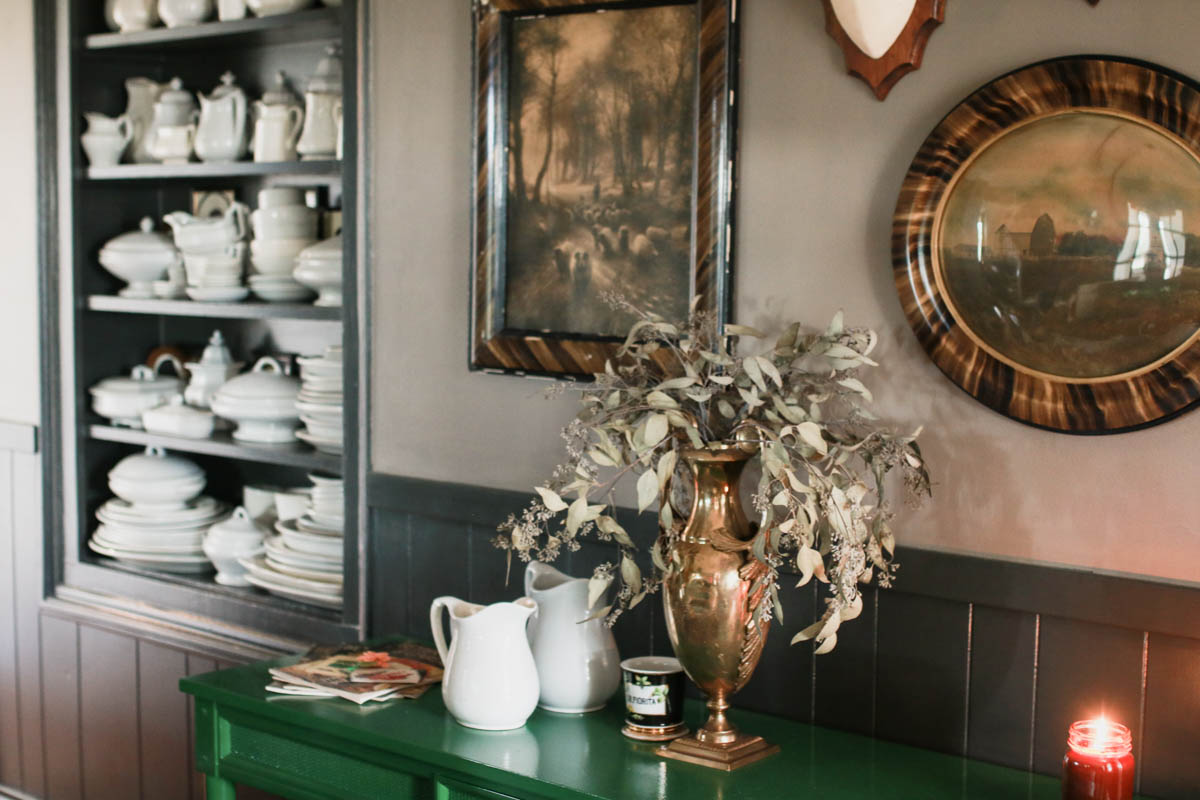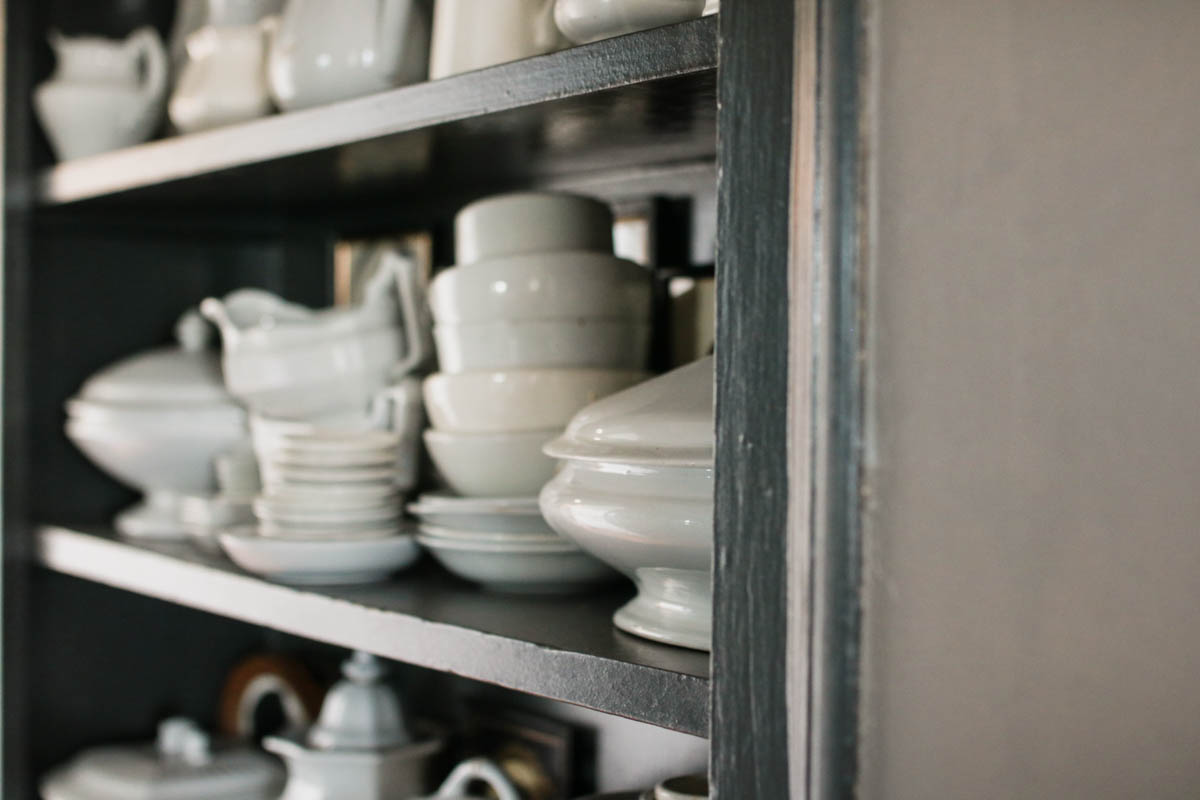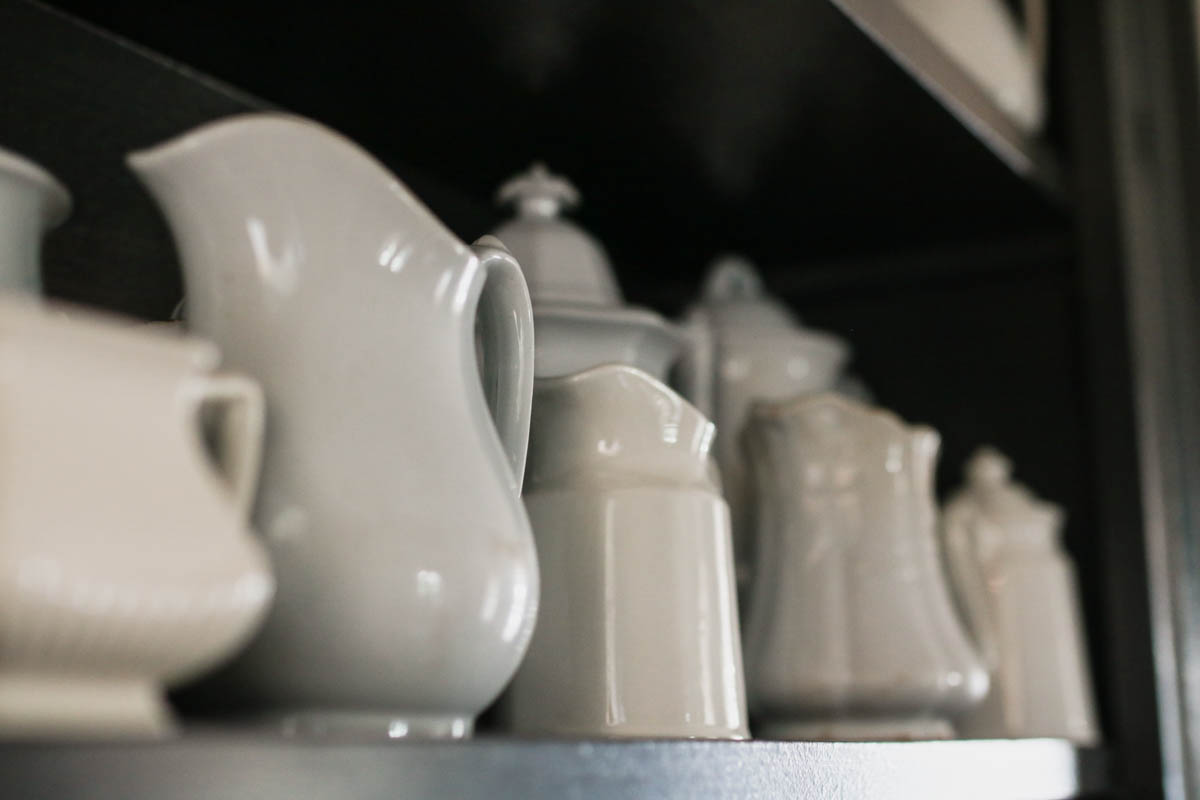I’m not quite sure when I came across my first piece of Ironstone but somehow it’s exploded into yet another collection, go figure. Unlike Jadeite or Pyrex Ironstone can be a little harder to identify. Jadeite is known for it’s green translucent color and Pyrex has it’s signature patterns Ironstone has several different makers and stamps and some have no stamps at all. Let’s start with what Ironstone actually is and when it was created.

Ironstone was started in the early 1800’s by Charles Mason as a durable alternative to the delicate dishes of England. Ironstone is either made in England, France or the United States. Although the white is what is hot for the moment there are other hues like blue (rare) and with patterns which is called transferwear. While not all ironstone will have a stamp by the maker at the bottom you’ll be able to tell if it’s ironstone by the weight of the piece. Ironstone is HEAVY it’s meant to hold up to the “typical” household chores.

Identifying the age of pieces can be tough as some will not have a maker stamp. Typically I find older pieces to have a bit more “imperfections” and the stamps can be a bit blurry. Newer pieces tend to be a little bit whiter and lighter weight. I prefer to find pieces that have a bit of character to them. I like the pieces with the brown crackles and a bit of chipping. However, If you are hoping to use Ironstone for food use make sure that you are finding pieces that do not have cracks and imperfections. Some pieces may have lead used in the glaze. You should also never microwave or put ironstone in the dishwasher.

I am still learning and it makes the hunt fun because when I find a piece i look it up and try my best to identify the year. One of my favorite guides is by Adirondack Girl who has photos and dates of many different hallmarks. I started out just buying what I could find but I’m slowly transitioning my formal dining room shelves into all pitchers and moving my bowls to the glass china cabinet in the parlor. It’s a work in progress.
I find a lot of my pieces at antique stores and flea markets but every now and then I’m lucky to find it in the wild at thrift stores but it’s usually the 1940s and later. A few of my favorite vendors to shop (that are luckily in the found cottage) are The Cotton Shed, HoneyHomb Market and Vintage Salvation which always have a handful of pieces in their booths. Prices can range from .50 to $400+ (if you find a coveted ironstone cake platter). It’s still fun to collect because you can still find it and at a reasonable price.
Have you found a recent fun piece? Share below!

Sources referenced Antiques 101 and Adirondack Girl



Love seeing your collection! The pitchers are beautiful!! I have a cabinet FULL of white dishes, my favorite, but only a couple platters that would be considered ironstone. Everything else is just thrift store finds- definitely not from the 1800’s
Thanks for the information! I have always loved ironstone. Recently I found some really cool pieces in my grandmothers attic!! I am on the lookout for more now. ❤️
I left a piece at Country Living Fair that I should have purchased ! It was a smallish pitcher with a great patina and I convinced myself I didn’t need it. Every time I see ironstone I think about that little piece , and it was $12 !!
2 weeks ago at an estate sale I uncovered an ironstone cake stand…for cheap. I gave it a bath and it looks beautiful! 😉 Unicorn Find!
THOSE ARE SO RARE! What a find! A unicorn for sure!